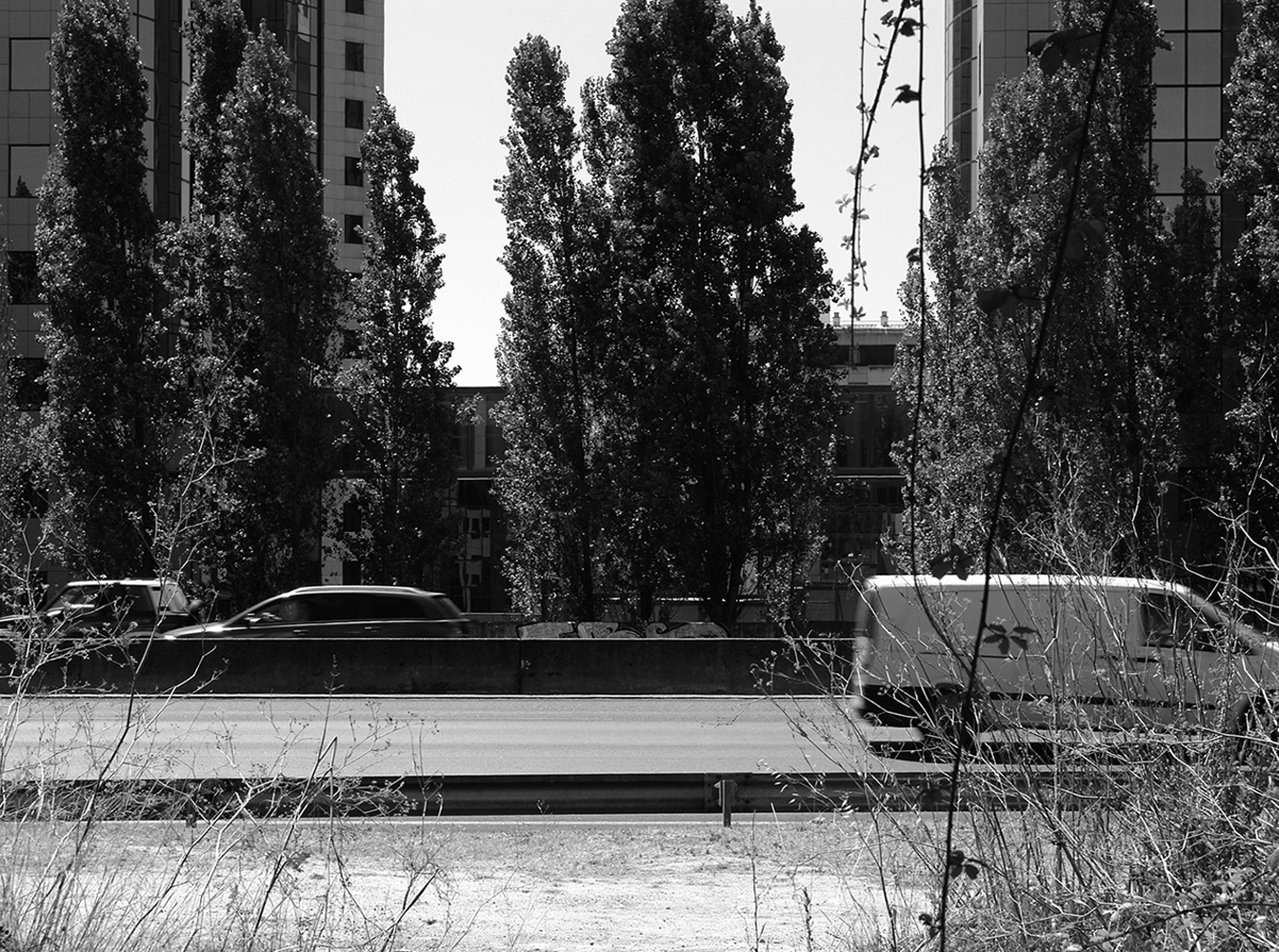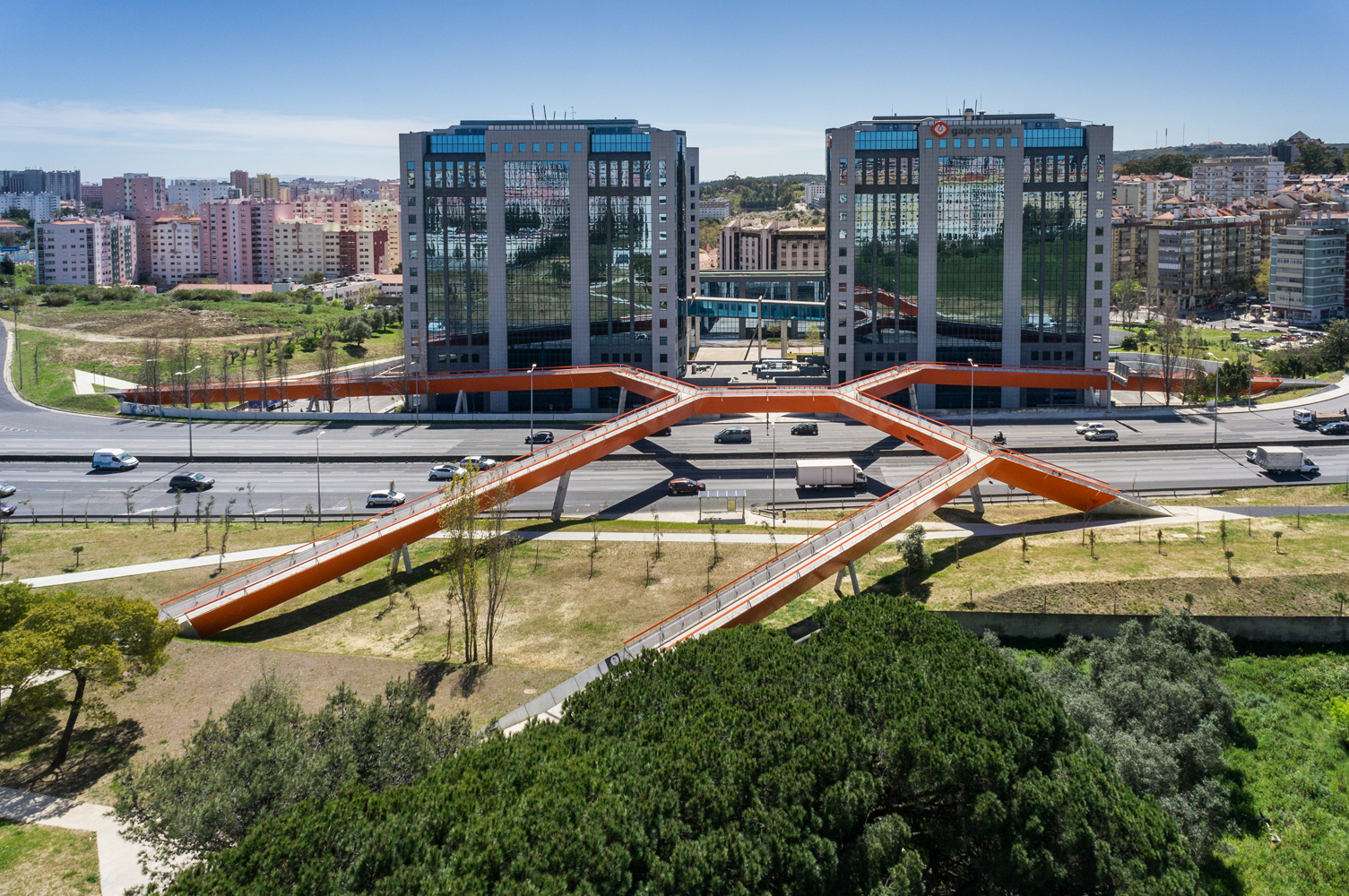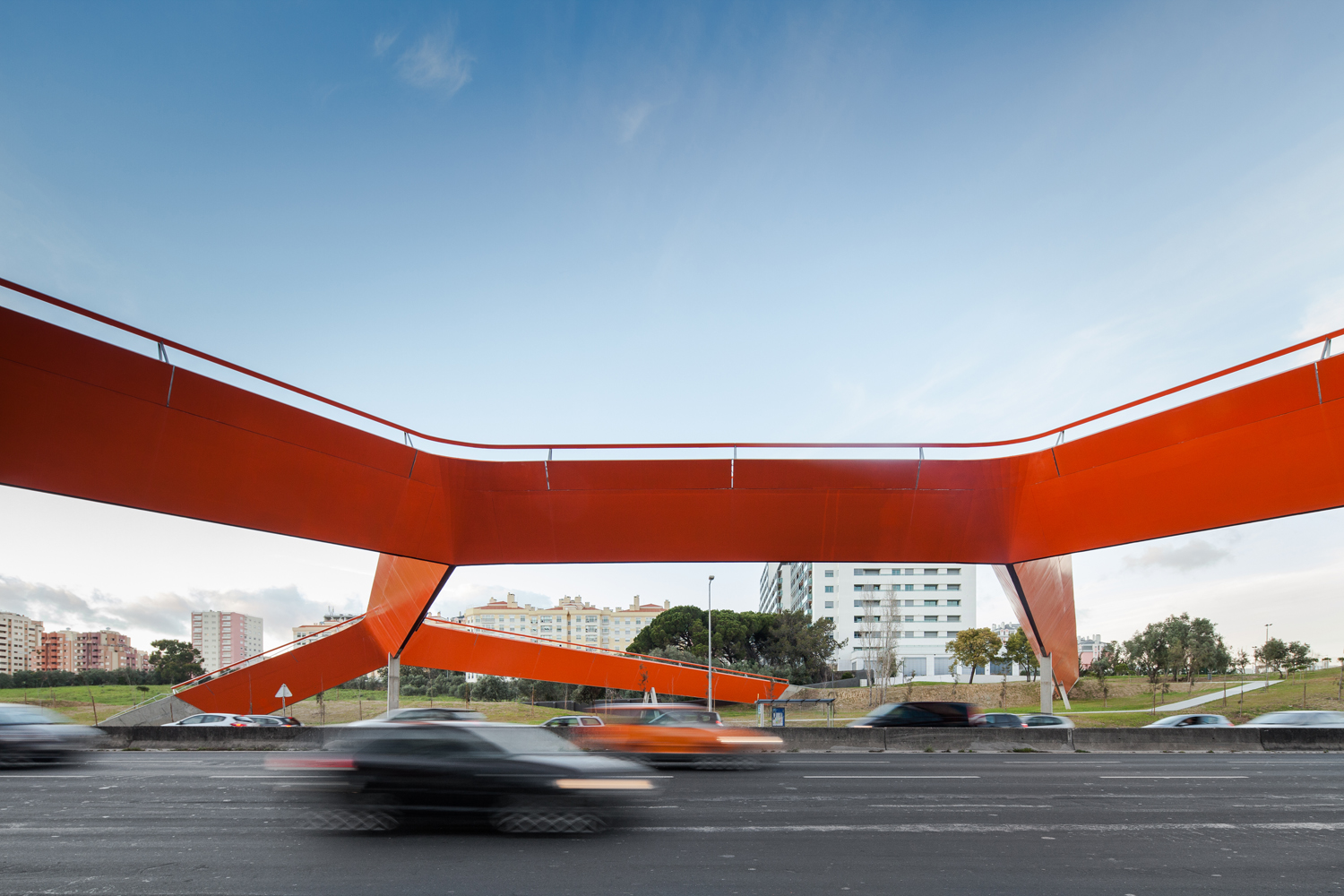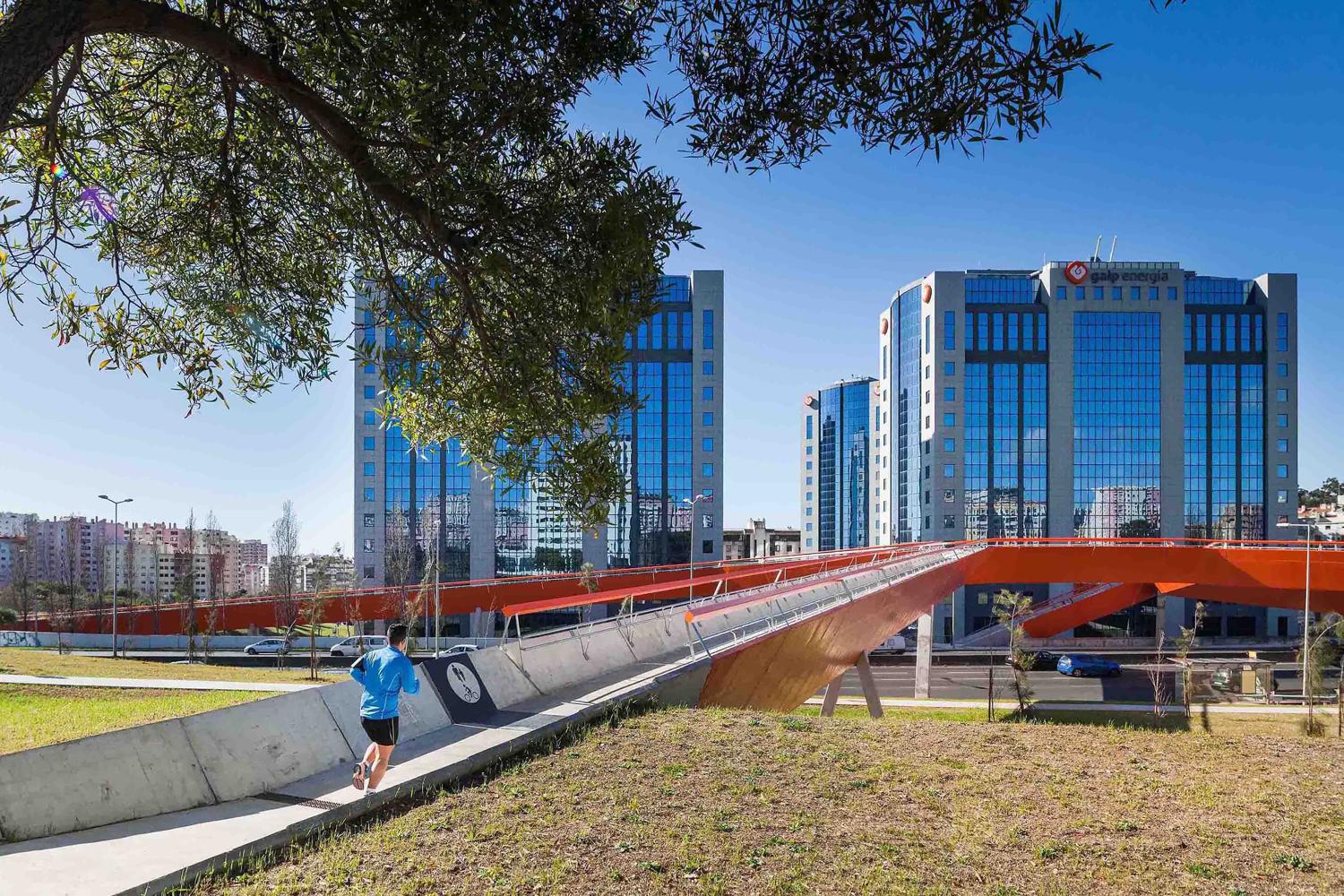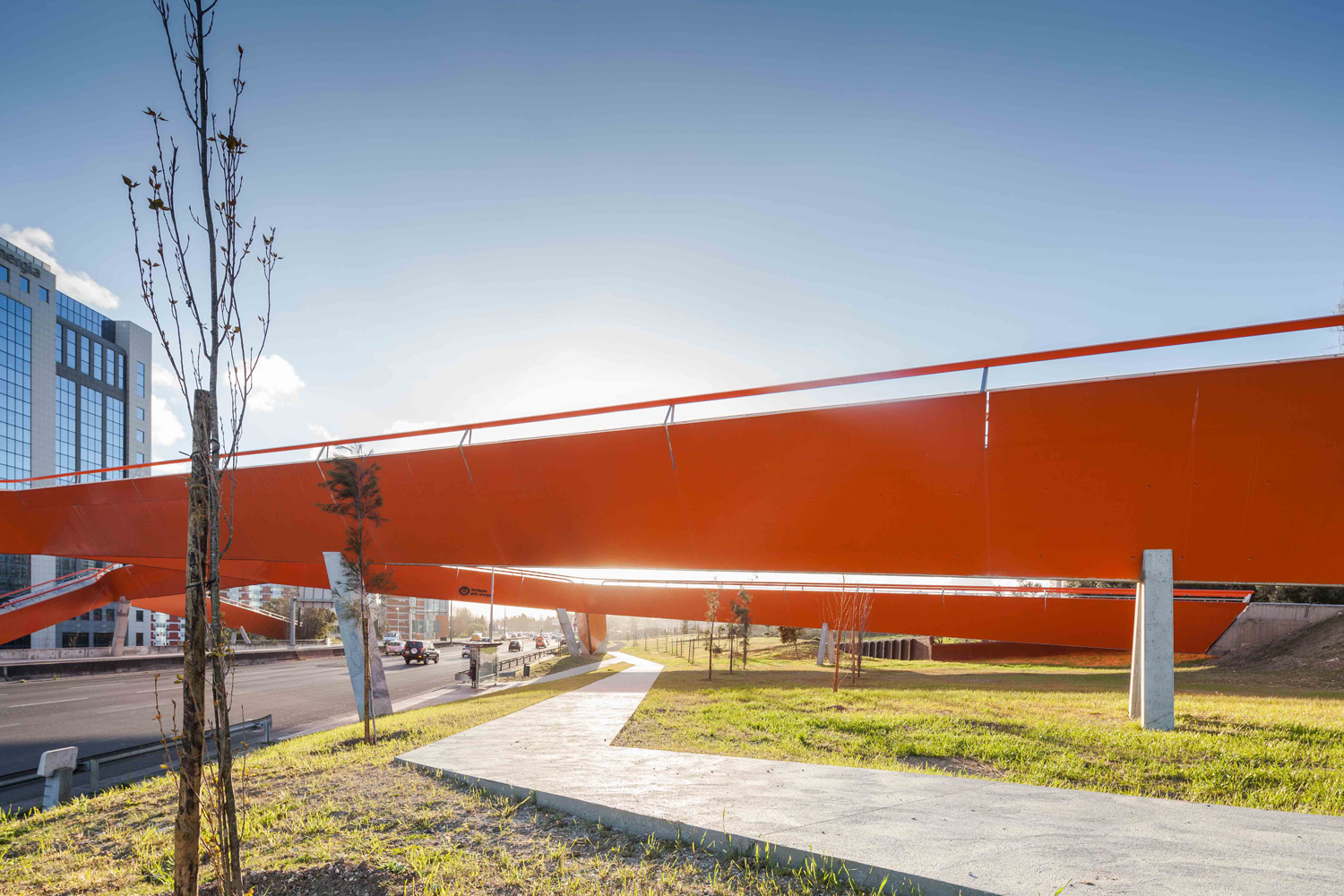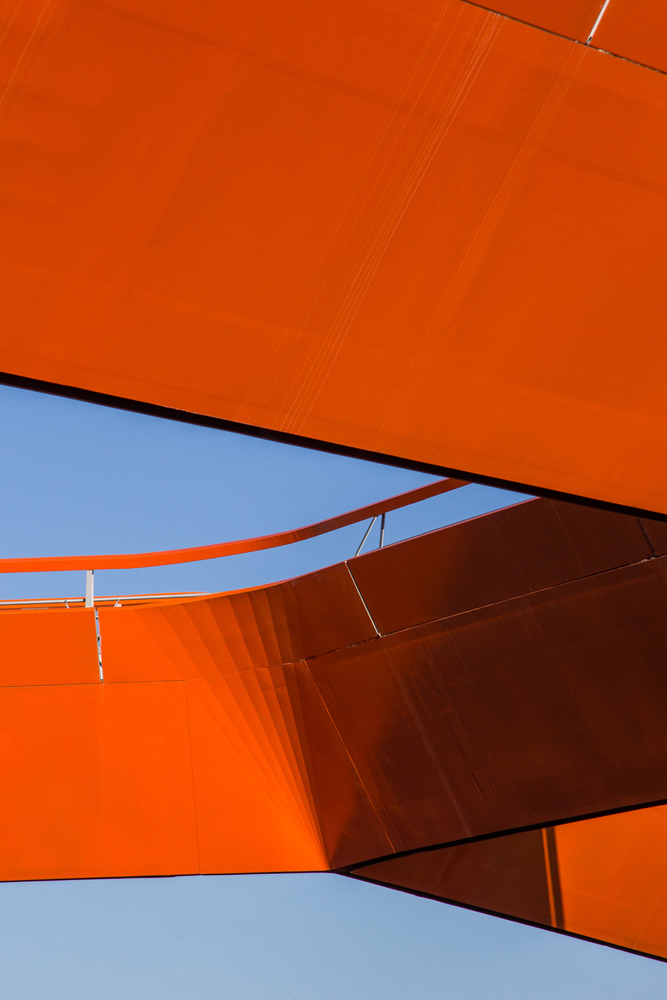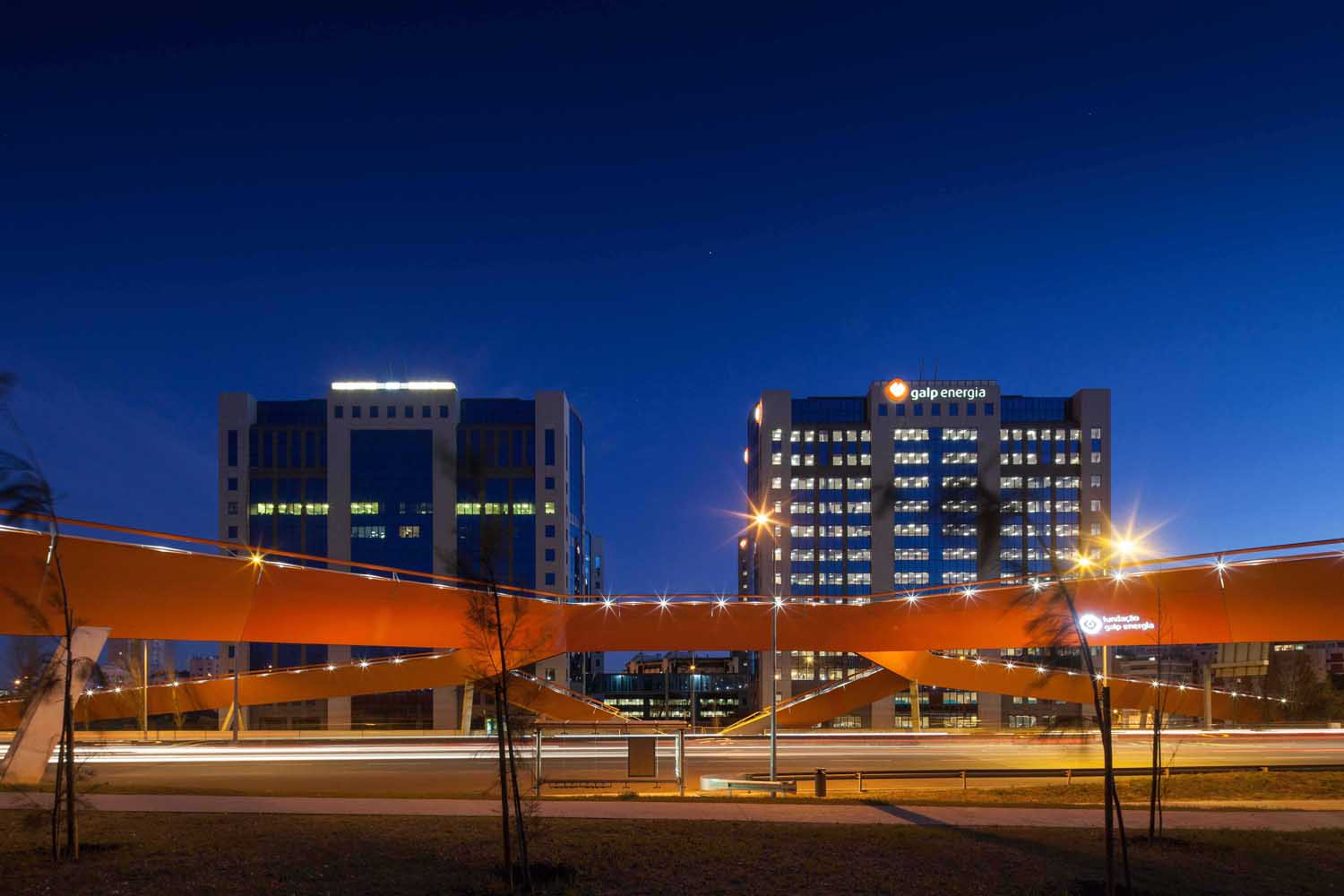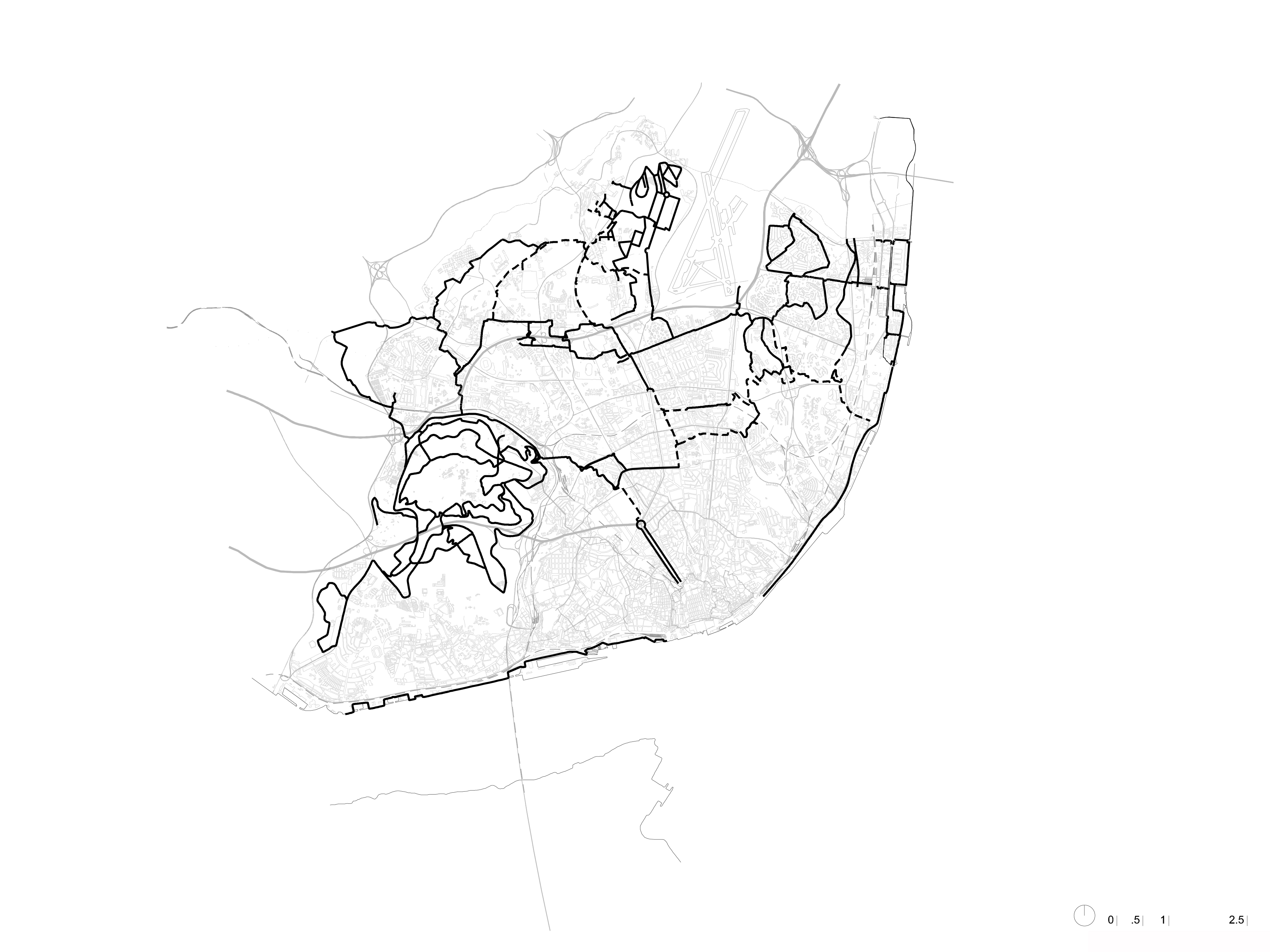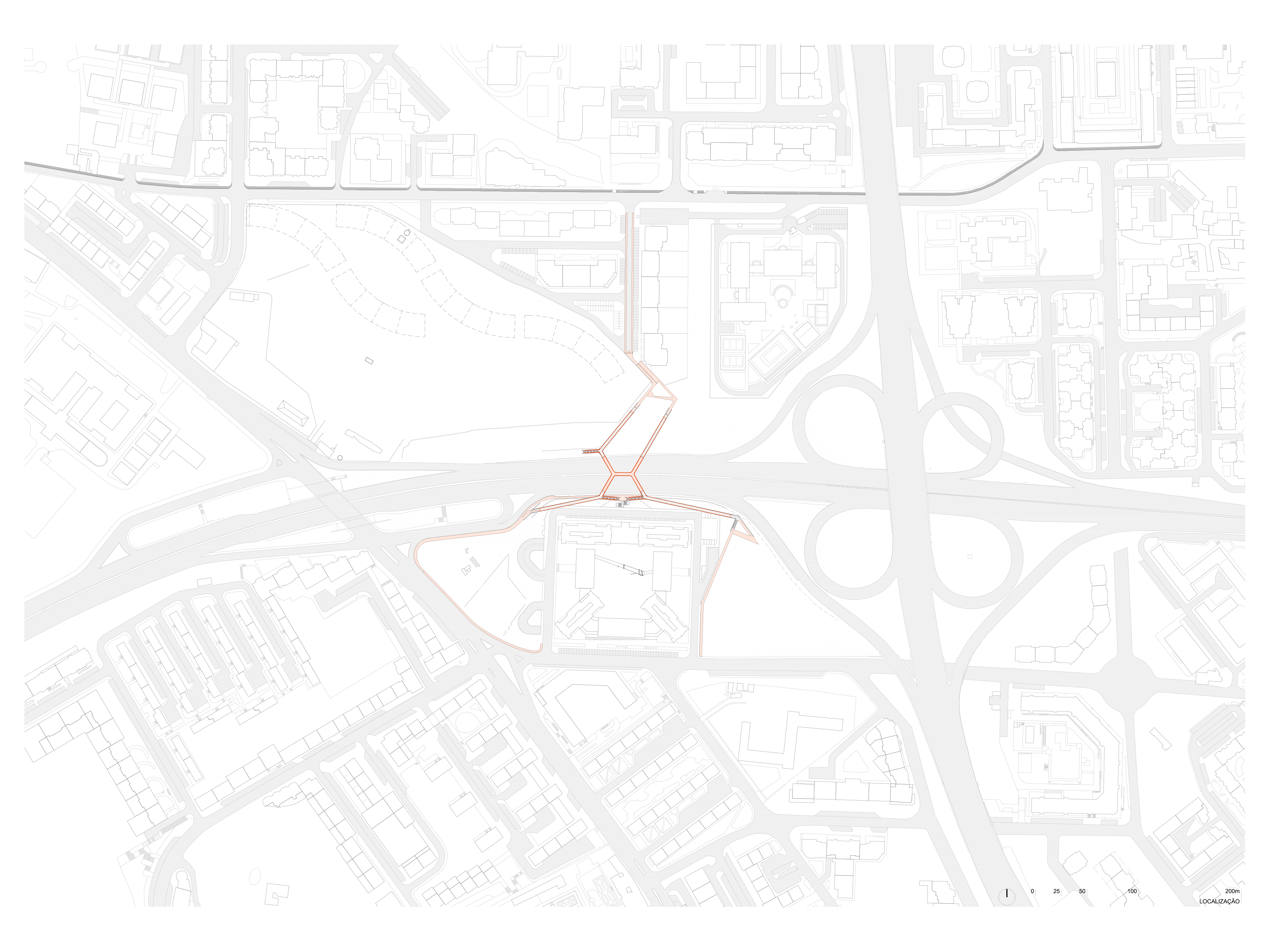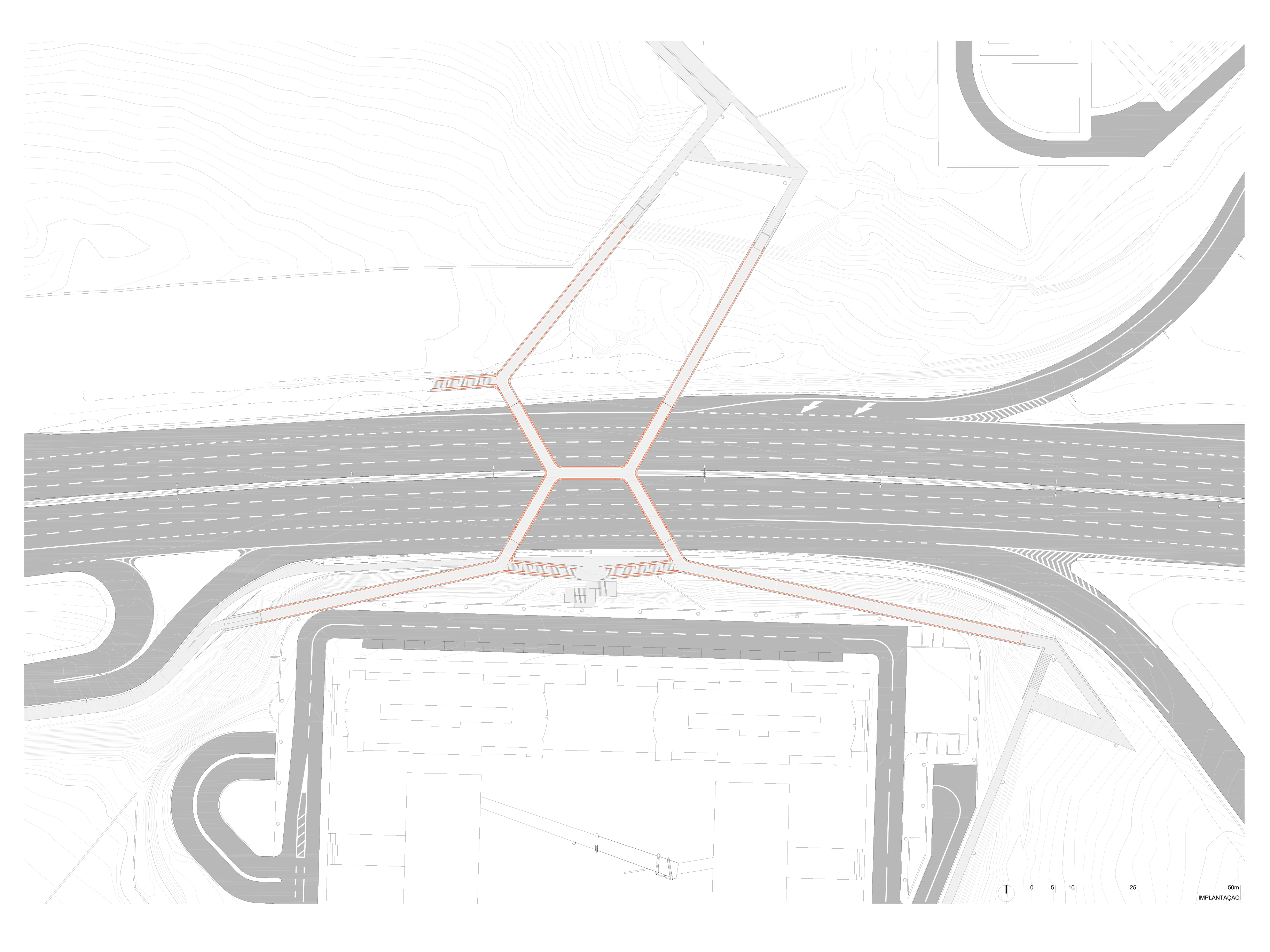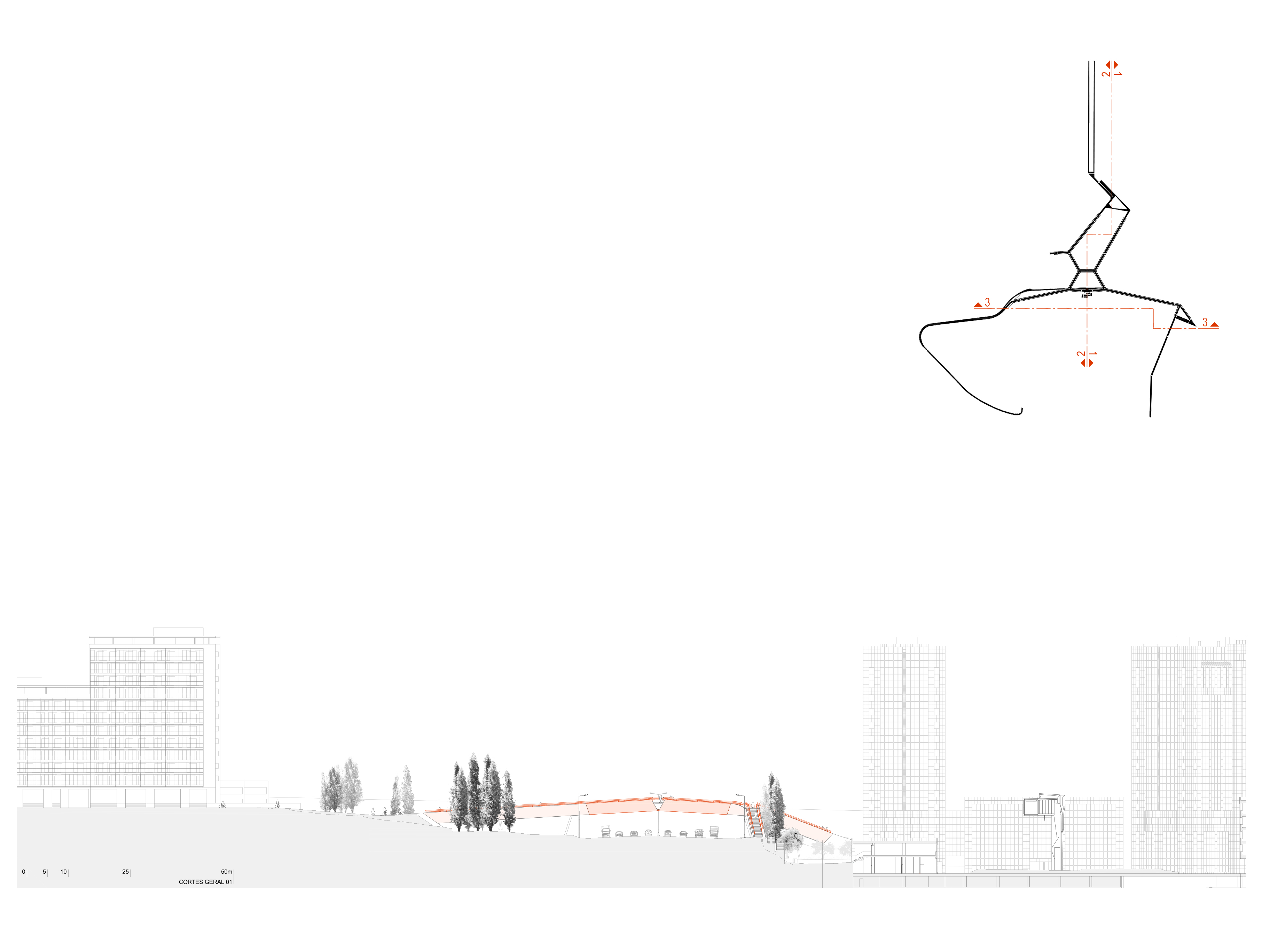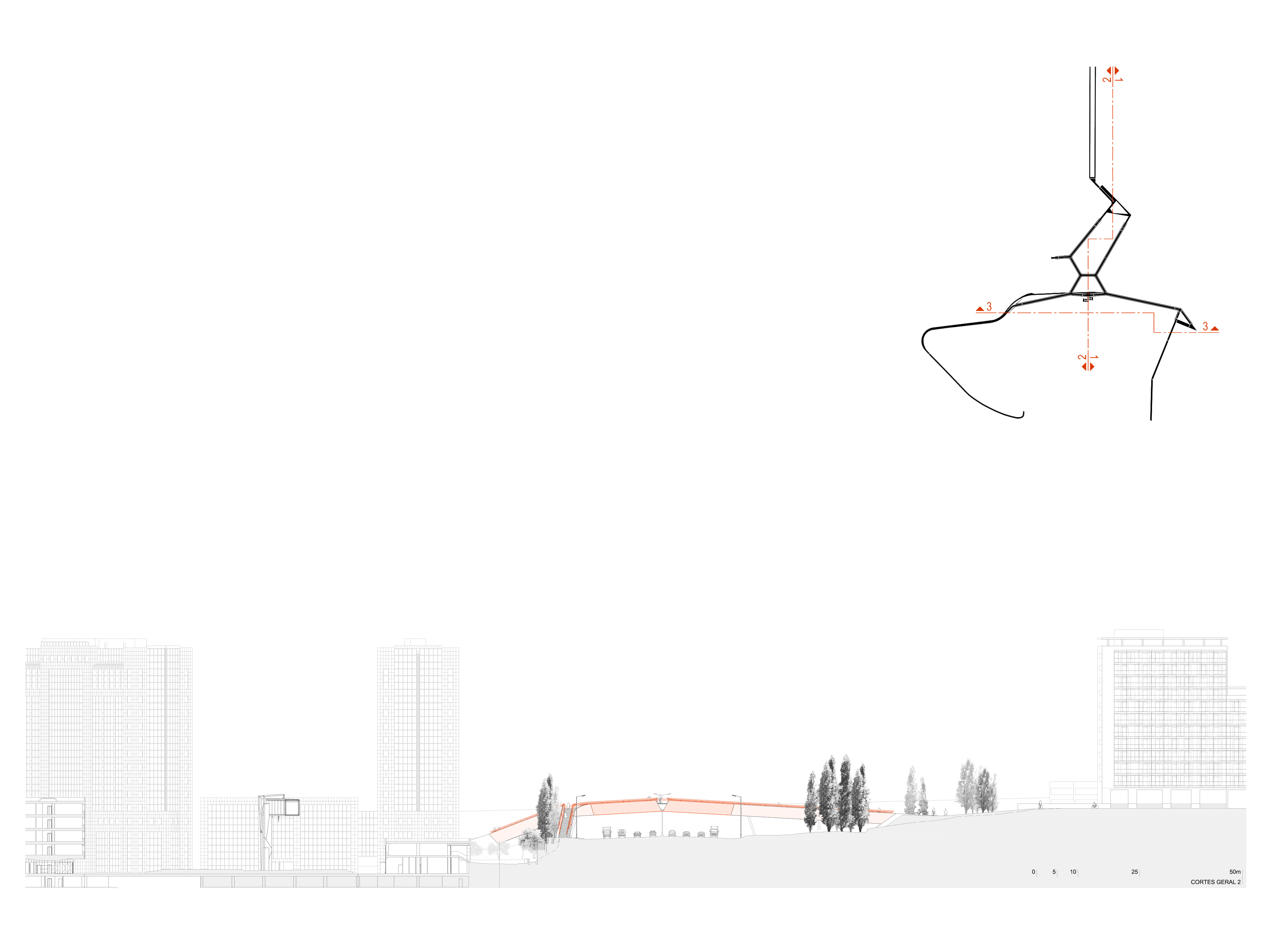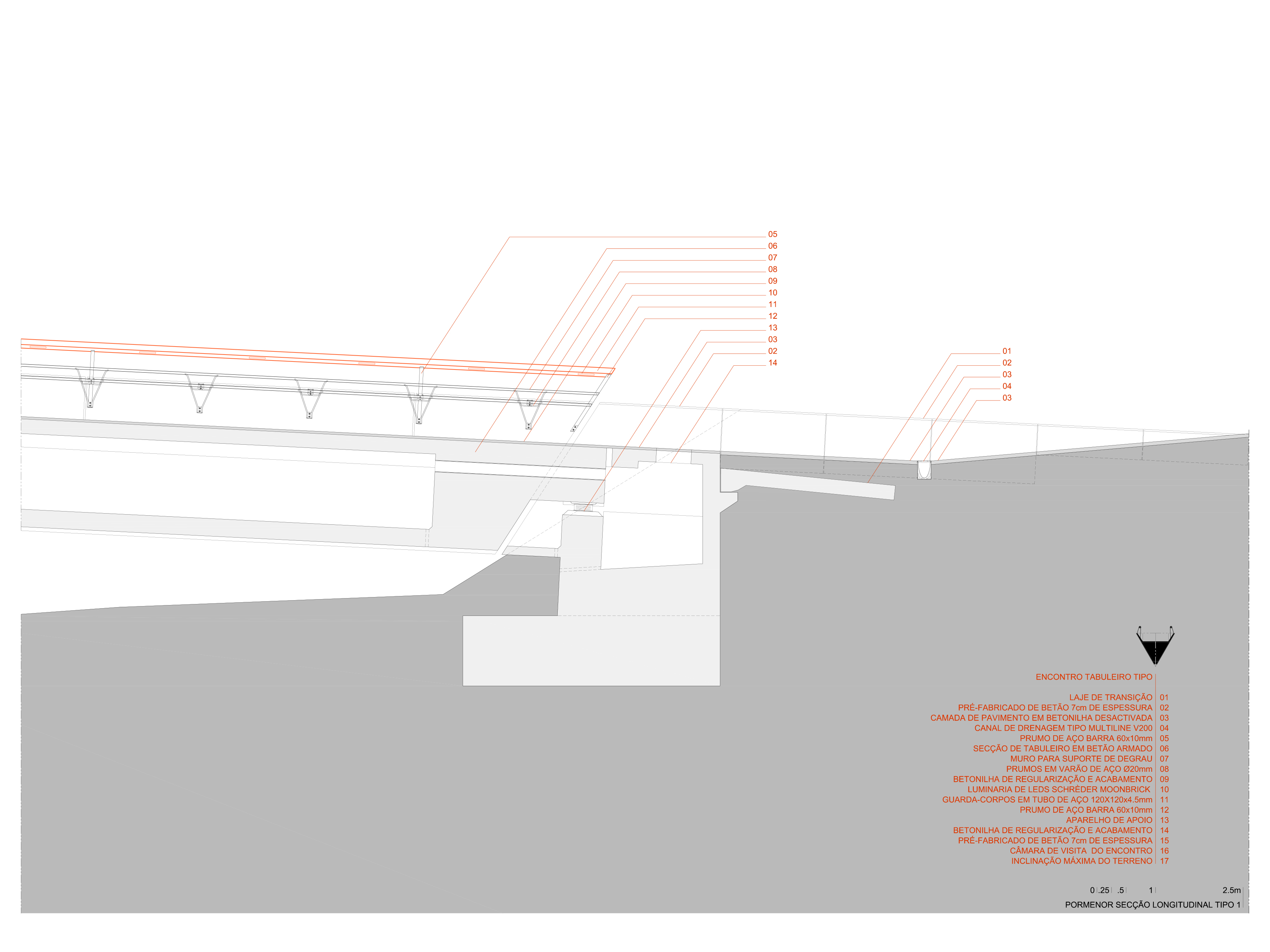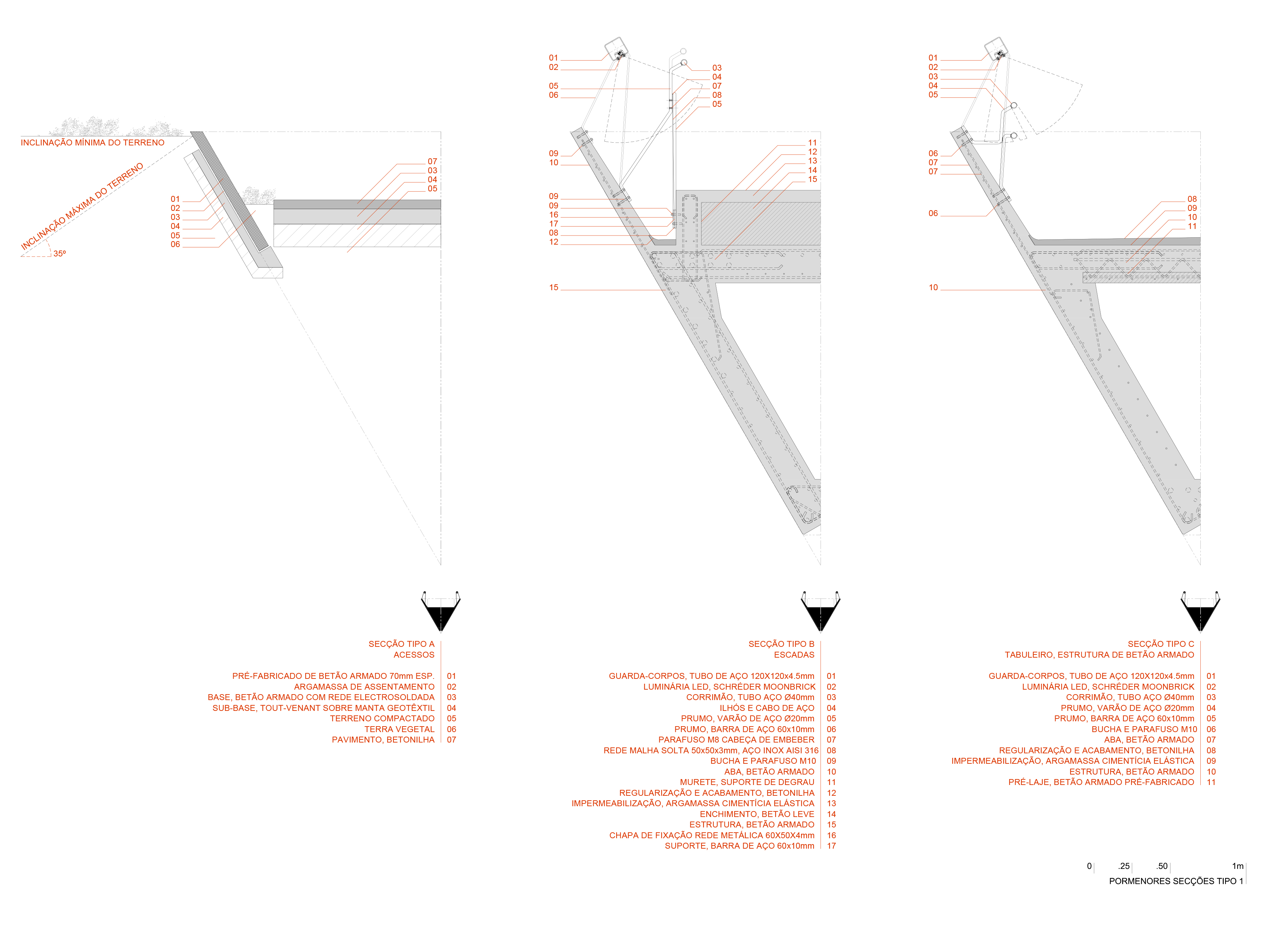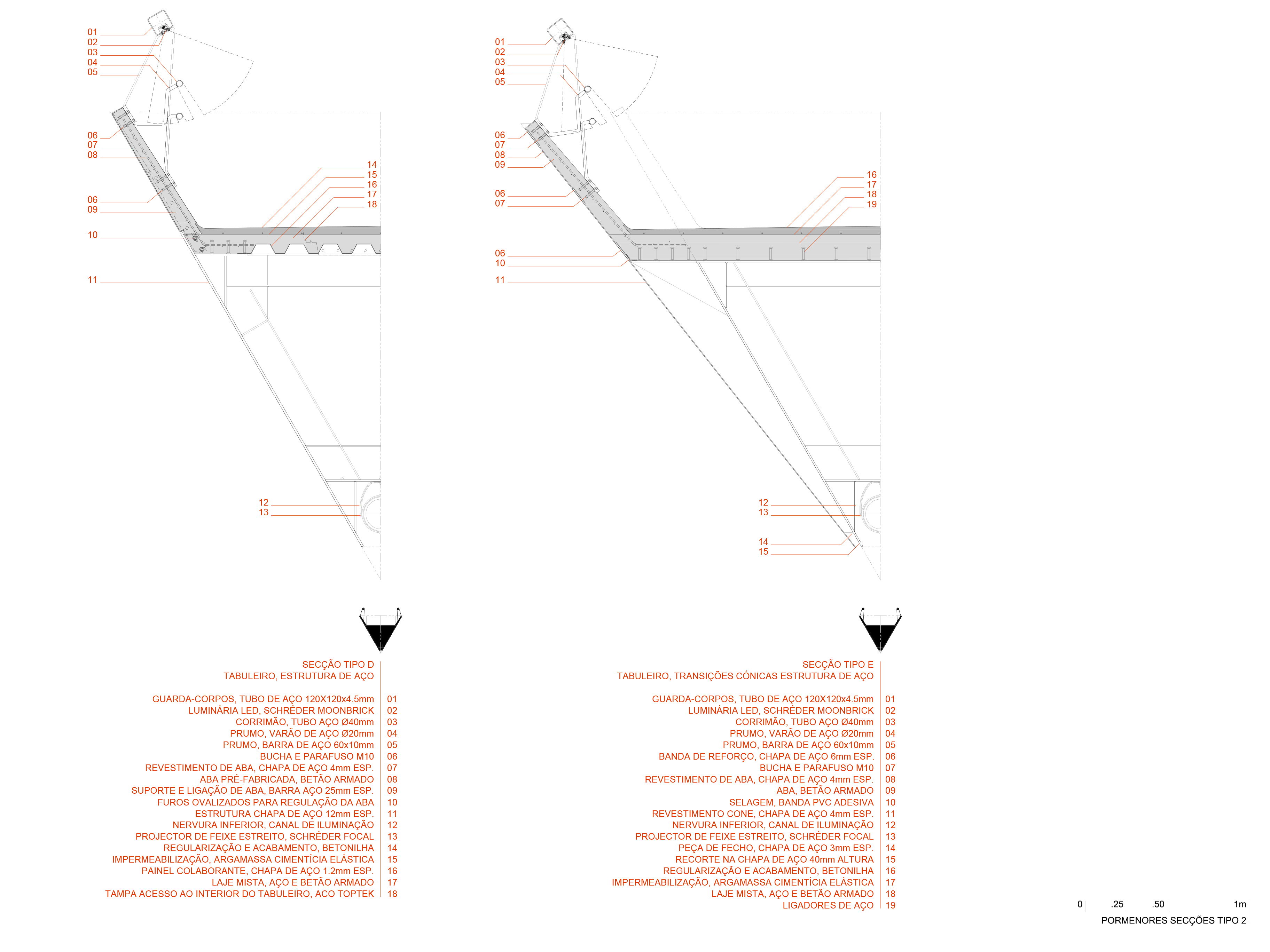12-14,
Pedestrian and cycling bridge over the “Segunda Circular” ring road
No hay camiños, hay que camiñar soñando1
In 1987 Bruce Chatwin wrote in The Songlinest2 of his travels across Australia focusing on Aboriginal songs, producing an extraordinary atlas of maps transmitted by the songs from generation to generation. In his book Chatwin re ects on the nature of human disquiet and nurtures – presenting ideas, quotations and encounters – the hypothesis that natural selection prepared us ‘from the structure of our brain-cells to the structure of our big toe – for a career of seasonal journeys...’3.
This primordial human disquiet accompanies the history of humanity – a history full of explorations and migrations, lines of song that mark the whole planet, mapping land, river, maritime and air routes that interlink and overlap at inspiring intervals, creating our cities.
This bridge belongs to future maps, inevitably optimistic in nature.
Here, where this bridge stands, the lanes and tree-lined avenues of the former estates of Ben ca, Luz and Telheiras provide an opportunity to build one of these new maps. A new network of paths, in part memory of the old lanes, literally lifts o the ground and passes over the great roadway that is Lisbon’s second ring road, an overlaid song of lines of di erent scales and modes.
1 From an inscription in the cloisters of a 13th-century monastery in Toledo, Camiñante no hay camino, hay que camiñar [Wayfarer, there is no path, just walk], to which someone added soñando [dreaming].
-
2 The Songlines, published by Penguin Books (Paperback),1988.
-
3 Op. cit.
